Contemporary interior design is a popular style that has been gaining momentum in recent years. It is characterised by clean lines, minimalism, and a focus on functionality. This style is perfect for those who want a modern look that is also practical.
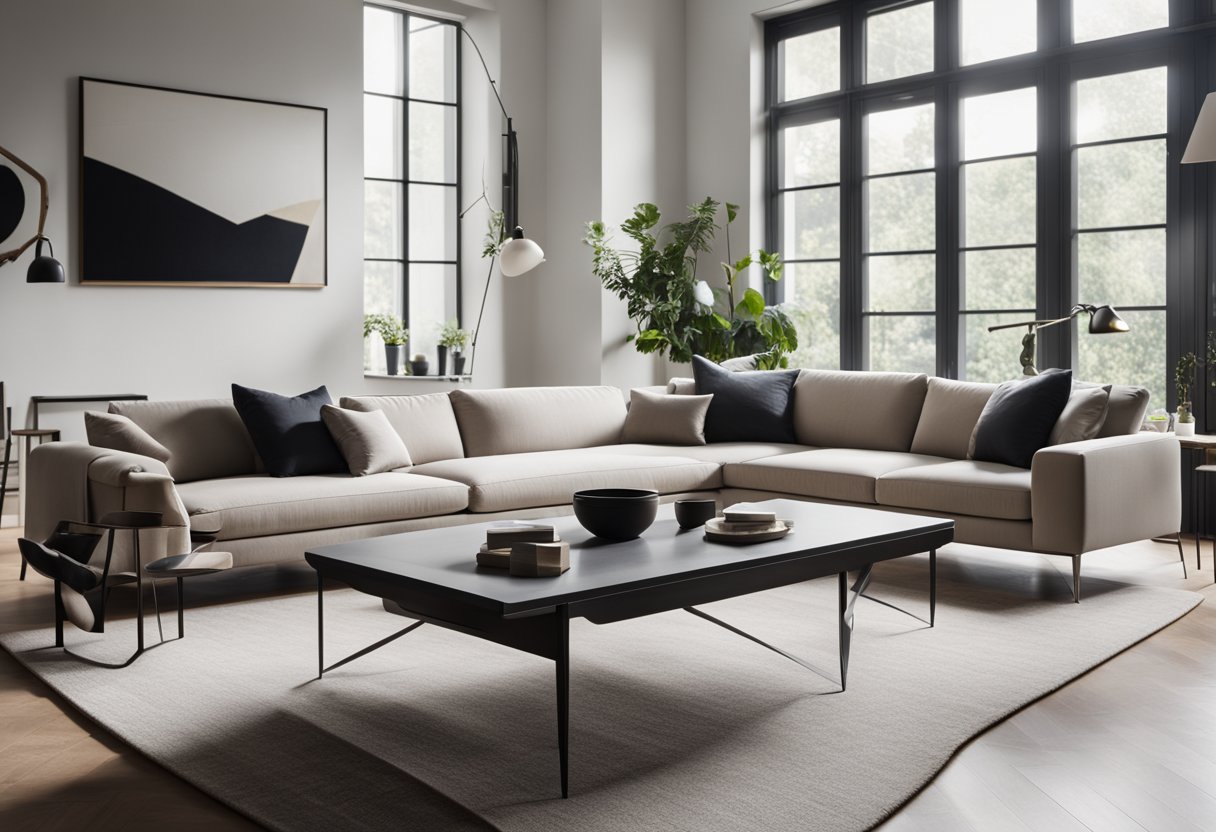
Foundations of contemporary interior design include a focus on simplicity, functionality, and minimalism. Key elements of design include clean lines, simple shapes, and a neutral colour palette. Room-specific concepts are also important in contemporary interior design, with a focus on creating spaces that are both functional and aesthetically pleasing.
Key Takeaways:
- Contemporary interior design is characterised by clean lines, minimalism, and a focus on functionality.
- Key elements of design include clean lines, simple shapes, and a neutral colour palette.
- Room-specific concepts are important in contemporary interior design, with a focus on creating spaces that are both functional and aesthetically pleasing.
Foundations of Contemporary Interior Design
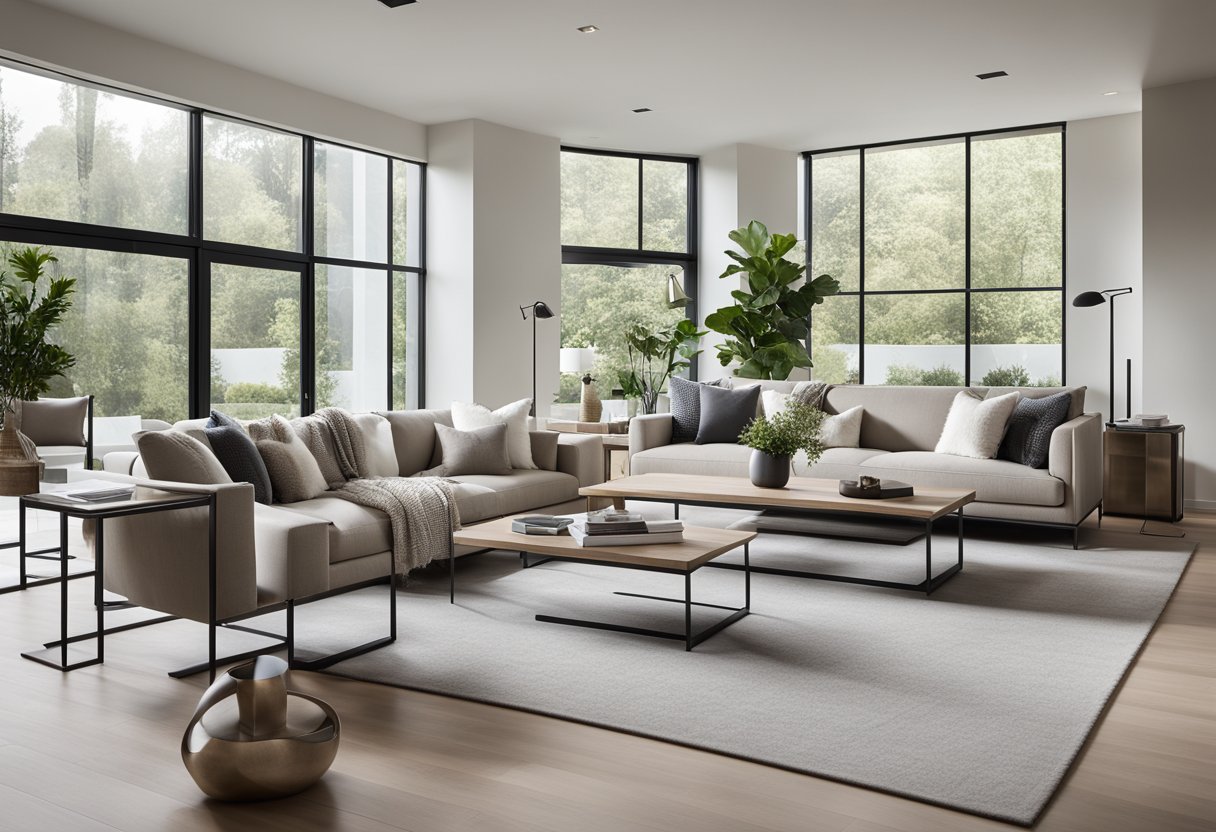
Contemporary interior design is a style that is constantly evolving, yet remains rooted in certain foundational elements. In this section, we will explore the defining characteristics of contemporary style, as well as its history and evolution.
Defining Contemporary Style
Contemporary style is often used interchangeably with modern style, but they are not the same. Contemporary style refers to the design of the present day, while modern style refers to a specific design movement that emerged in the early 20th century.
Contemporary style is characterized by clean lines, minimalism, and a focus on functionality. Neutral colors are often used as a backdrop, while pops of color and texture are added through accessories and artwork. Materials such as glass, metal, and concrete are often used to create a sleek and modern look.
History and Evolution
Contemporary style has its roots in the modernist movement of the early 20th century. Modernism was characterized by a rejection of traditional design elements and a focus on simplicity and functionality. The Bauhaus movement, which emerged in Germany in the 1920s, was a major influence on modernist design.
Contemporary style has evolved over time to incorporate new materials, technologies, and design trends. Today, contemporary design is often characterized by a mix of styles, incorporating elements of traditional design as well as cutting-edge technology.
As interior design continues to evolve, contemporary style will continue to adapt and change to reflect the tastes and needs of the present day. Whether you are looking to create a sleek and modern space or incorporate contemporary elements into a more traditional design, the foundational elements of contemporary style can help guide your design choices.
Key Elements of Design
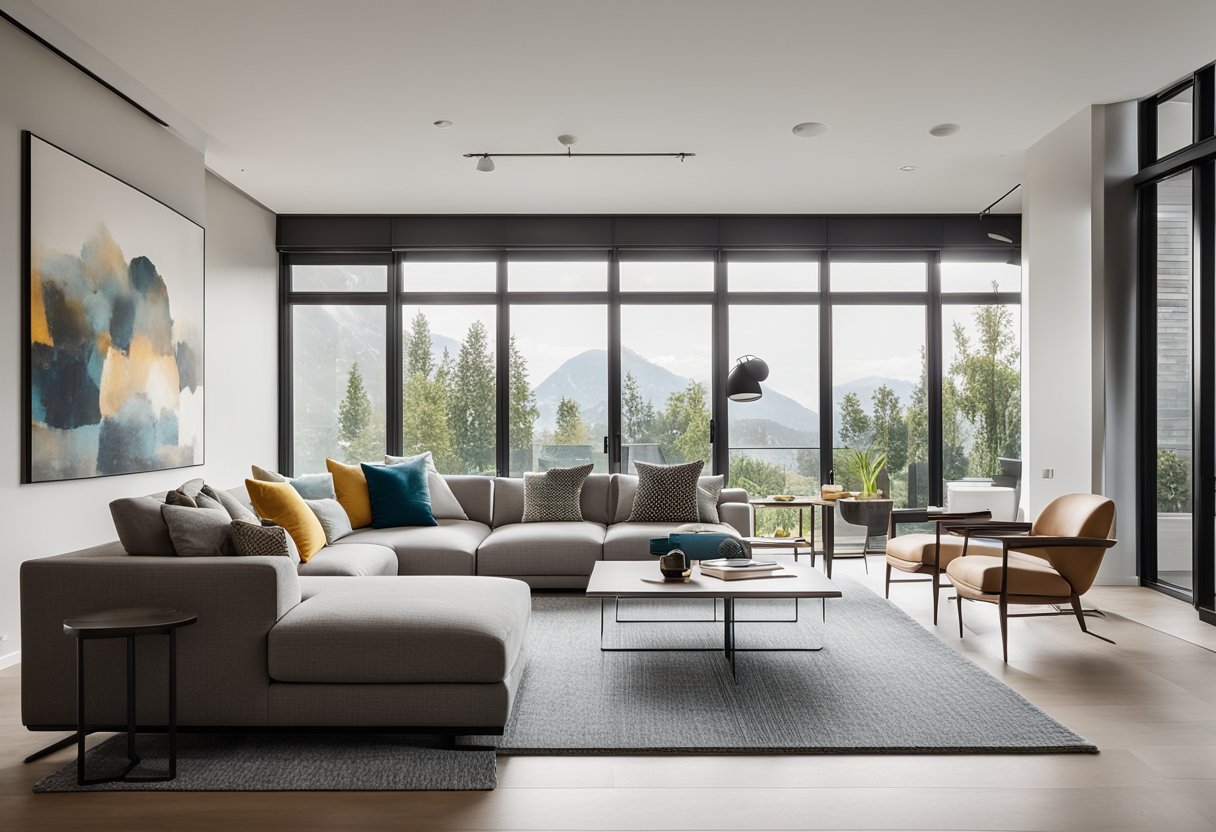
Contemporary interior design is all about creating a space that is sleek, sophisticated, and minimalistic. It is a style that is defined by clean lines, natural materials, and a neutral colour palette. Here are some key elements that define contemporary interior design:
Clean Lines and Form
Clean lines and form are at the heart of contemporary interior design. The style is characterised by sleek, simple lines that create a sense of order and harmony. This is achieved through the use of geometric shapes, straight lines, and smooth surfaces. The minimalistic approach to design means that every element in the space has a purpose and is carefully considered.
Natural Materials and Textures
Contemporary interior design incorporates natural materials and textures to create a sense of warmth and comfort. Wood, stone, and other natural materials are used to add texture and depth to the space. This creates a sense of balance between the clean lines and form of the design and the organic feel of the natural materials.
Neutral Colour Palette
A neutral colour palette is a hallmark of contemporary interior design. Muted neutrals, black, and white are used to create a sophisticated and timeless look. The use of a neutral colour palette allows the clean lines and form of the design to take centre stage, while also creating a sense of calm and tranquillity.
Influence of Light and Space
Light and space are integral to contemporary interior design. The style makes use of natural light to create a bright and airy feel. Large windows, skylights, and open floor plans are common features of contemporary design. The use of space is also carefully considered, with the aim of creating a sense of balance and harmony between the different elements in the room.
In summary, contemporary interior design is a style that is defined by clean lines, natural materials, a neutral colour palette, and the careful use of light and space. By incorporating these key elements into your design, you can create a space that is both sophisticated and inviting.
Room-Specific Concepts
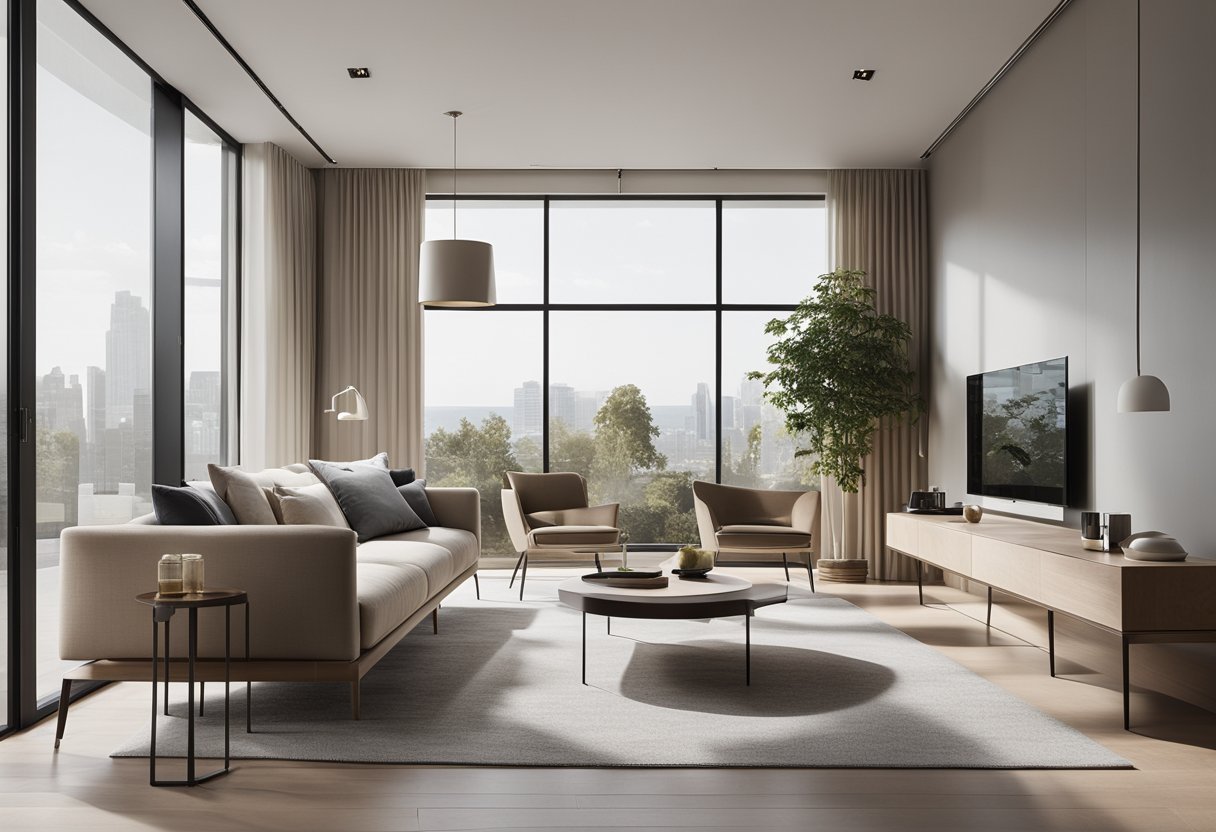
Living Room Essentials
Your living room is the heart of your home, where you spend most of your time relaxing and entertaining guests. To create a contemporary living room, you need to focus on clean lines, minimalism, and current trends.
When it comes to furniture, choose pieces with simple designs and neutral colours. A comfortable sofa and armchairs are essential, and you can add interest with bold cushions and throws. A statement rug can also add texture and colour to the space.
Lighting is crucial in a contemporary living room. Use a combination of ceiling lights, floor lamps, and table lamps to create a warm and inviting atmosphere.
Contemporary Bedroom Aesthetics
Your bedroom is a place of rest and relaxation, and your design should reflect that. A contemporary bedroom should have a simple and uncluttered aesthetic, with a focus on natural materials and neutral colours.
Choose a bed with a low profile and simple design, and add interest with textured bedding and cushions. A statement rug can also add warmth and texture to the space.
Lighting is essential in a contemporary bedroom. Use a combination of ambient lighting and task lighting to create a relaxing atmosphere.
Modern Kitchen Innovations
The kitchen is the heart of your home, and a contemporary kitchen should be functional and stylish. Focus on clean lines, minimalism, and natural materials.
When it comes to cabinets, choose a simple design with sleek handles. You can add interest with a bold backsplash or statement tiles.
For appliances, choose stainless steel for a modern and sleek look. A kitchen island can also add functionality and style to the space.
Bathroom Design Trends
Your bathroom should be a place of relaxation and tranquillity. A contemporary bathroom should have a simple and uncluttered design, with a focus on natural materials and neutral colours.
When it comes to tiles, choose a simple and neutral design. You can add interest with a statement mirror or bold accessories.
Lighting is crucial in a contemporary bathroom. Use a combination of ambient lighting and task lighting to create a relaxing atmosphere.
Overall, creating a contemporary interior design is all about simplicity, minimalism, and current trends. Focus on clean lines, natural materials, and neutral colours to create a space that is both functional and stylish.
Furniture and Decor
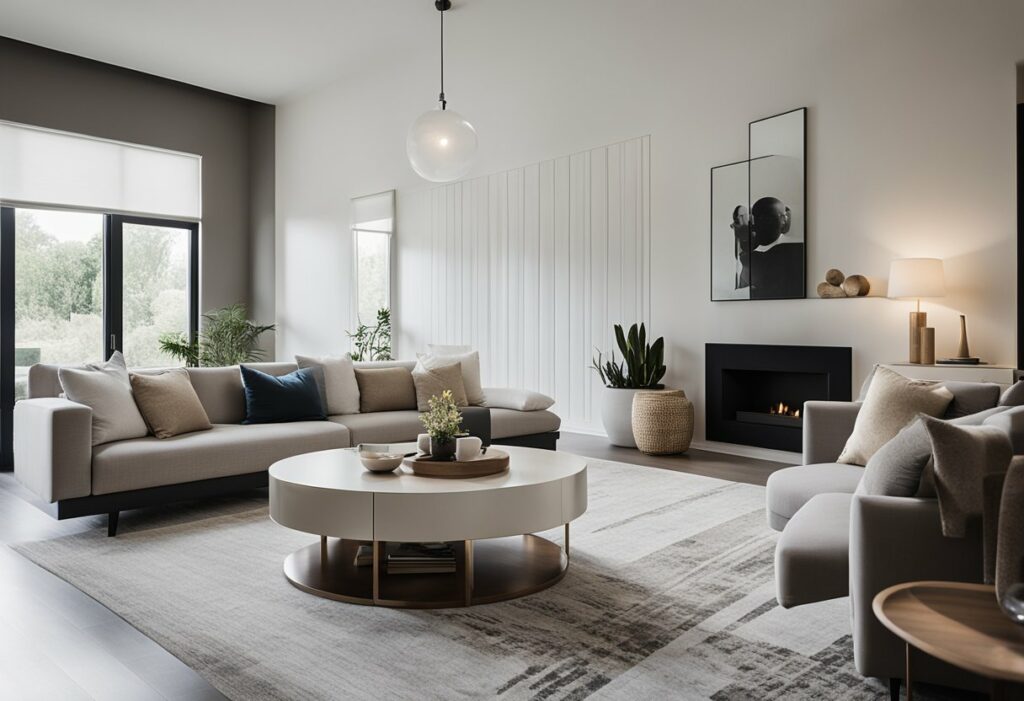
Contemporary interior design is all about minimalism and clean lines, so selecting furniture is a crucial part of the process. When choosing furniture, it’s important to keep the space in mind and select pieces that will complement the room’s overall aesthetic. Opt for furniture with geometric shapes and straight lines, such as a sleek sofa or a minimalist coffee table.
Selecting Furniture
When selecting furniture, it’s important to choose pieces that are both functional and stylish. Consider investing in unique pieces that will add character to the room, such as a statement rug or a bold accent chair. Don’t be afraid to mix and match different textures and materials, such as leather and wood, to create a visually interesting space.
Decorative Accents
Decorative accents are a great way to add personality to a room without overwhelming the space. Consider incorporating decorative accents such as a mirror or a piece of art to create a focal point in the room. Plants are also a great way to add life to a space and create a calming atmosphere.
Art and Accessories
Art and accessories are an important part of contemporary interior design. When selecting art, opt for pieces with bold colours and abstract designs. Consider incorporating accessories such as a statement vase or a unique sculpture to add interest to the room.
Overall, when it comes to contemporary interior design, less is more. Don’t be afraid to experiment with different textures and materials, but make sure to keep the space clutter-free and visually appealing. With the right furniture and decor, you can create a space that is both stylish and functional.
Colour and Texture in Detail
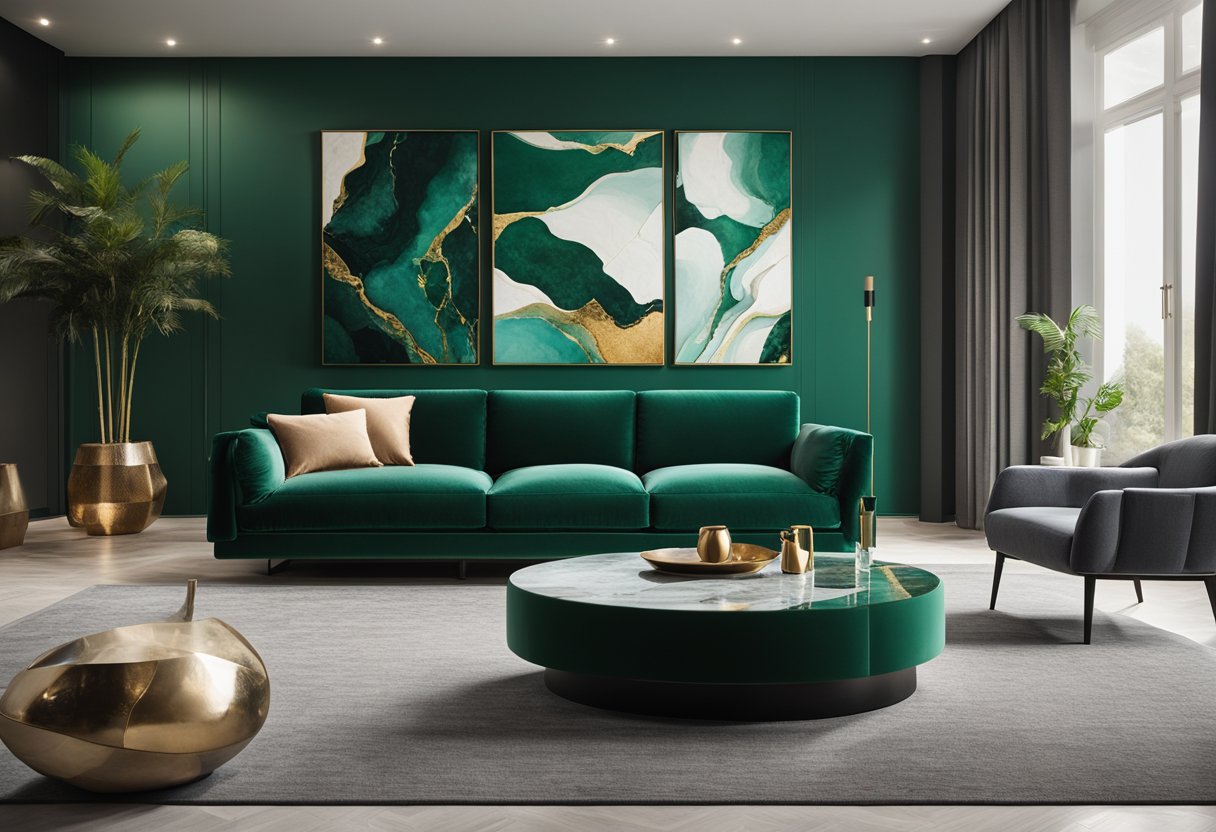
When it comes to contemporary interior design, colour and texture play a crucial role in creating a cohesive and stylish look. In this section, we’ll explore how to work with a neutral palette, add pops of colour, and incorporate textiles and rugs to add depth and interest to your space.
Working with a Neutral Palette
A neutral colour palette is a hallmark of contemporary design. Shades of white, beige, grey, and black create a clean, sophisticated look that allows other elements in the room to shine. When working with a neutral palette, it’s important to pay attention to texture. Using different textures, such as matte and glossy finishes or rough and smooth surfaces, can add depth and interest to a room without introducing new colours.
Adding Pops of Colour
While a neutral palette is the foundation of contemporary design, adding pops of colour can keep the space from feeling too sterile. When choosing colours, stick to a limited palette and use them sparingly. A bright throw pillow, a bold piece of artwork, or a colourful vase can add just the right amount of interest without overwhelming the space.
Incorporating Textiles and Rugs
Textiles and rugs are an excellent way to add texture and warmth to a contemporary space. Look for fabrics with interesting weaves or patterns, such as herringbone or chevron, and mix and match them for a layered look. Rugs can also add texture and colour to a room, and can be used to define different areas within an open-concept space.
Overall, when it comes to contemporary interior design, less is often more. Stick to a limited colour palette, play with texture, and incorporate a few well-chosen accessories to create a space that is both stylish and functional.
Materials and Finishes
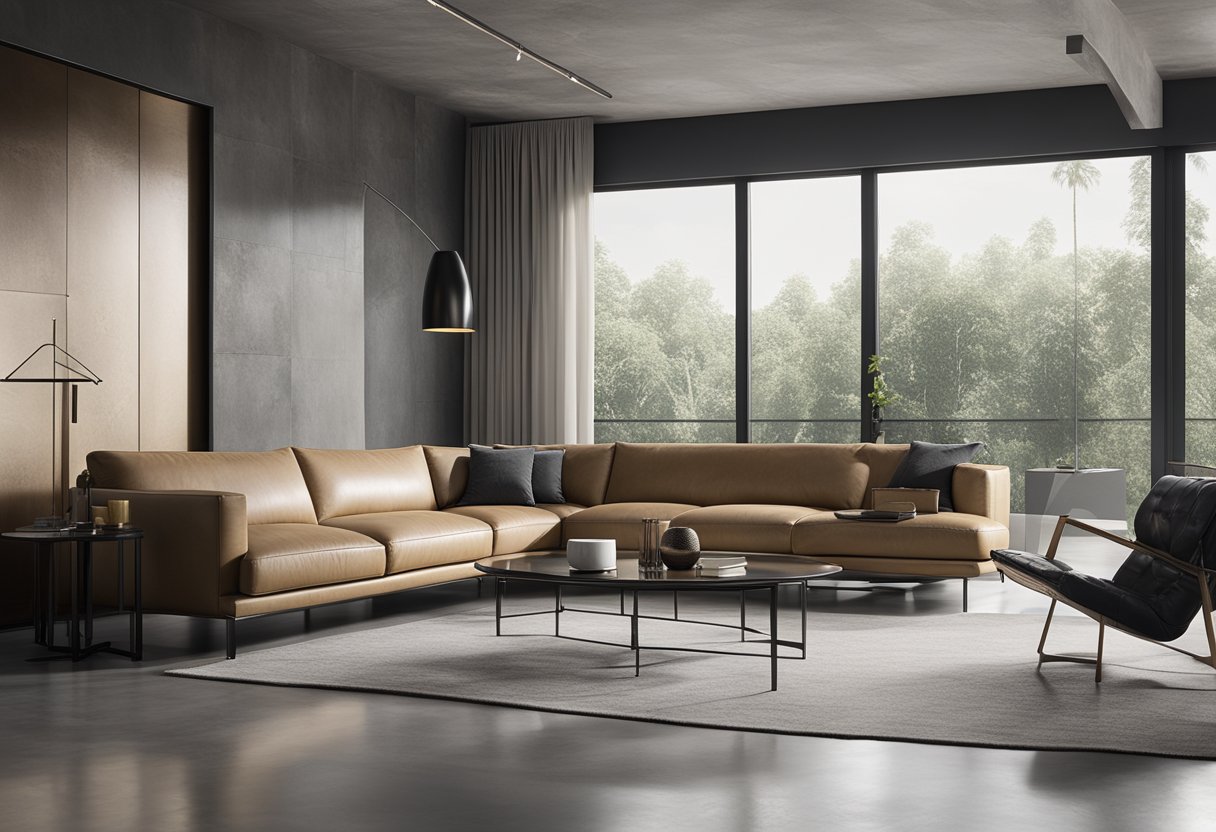
When it comes to contemporary interior design, the materials and finishes you choose can make all the difference. Here are some exciting options you might consider for your home:
Stone, Wood, and Metal
Natural materials like stone, wood, and metal are an excellent choice for contemporary interior design. They add texture and depth to a space and can be used in a variety of ways. For example, you might use a stone feature wall to create a focal point in your living room or a wooden ceiling to add warmth to your bedroom.
When it comes to metal, stainless steel is a popular choice for contemporary interiors. It has a sleek, modern look that works well in kitchens and bathrooms. You might also consider using steel accents throughout your home, such as a steel railing on your staircase or steel light fixtures in your living room.
Glass and Concrete Features
Another popular trend in contemporary interior design is the use of glass and concrete features. Glass can be used to create a sense of openness and transparency in a space. For example, you might install a glass partition between your living room and dining room to create separate areas while still maintaining an open feel.
Concrete is another material that has become increasingly popular in contemporary interiors. It has a raw, industrial look that works well in modern spaces. You might consider using concrete flooring in your home or incorporating concrete countertops in your kitchen.
In conclusion, when it comes to contemporary interior design, the materials and finishes you choose can make all the difference. Natural materials like stone, wood, and metal can add texture and depth to a space, while glass and concrete features can create a sense of openness and modernity. Consider these options when designing your home to create a space that is both functional and stylish.
Lighting and Ambience
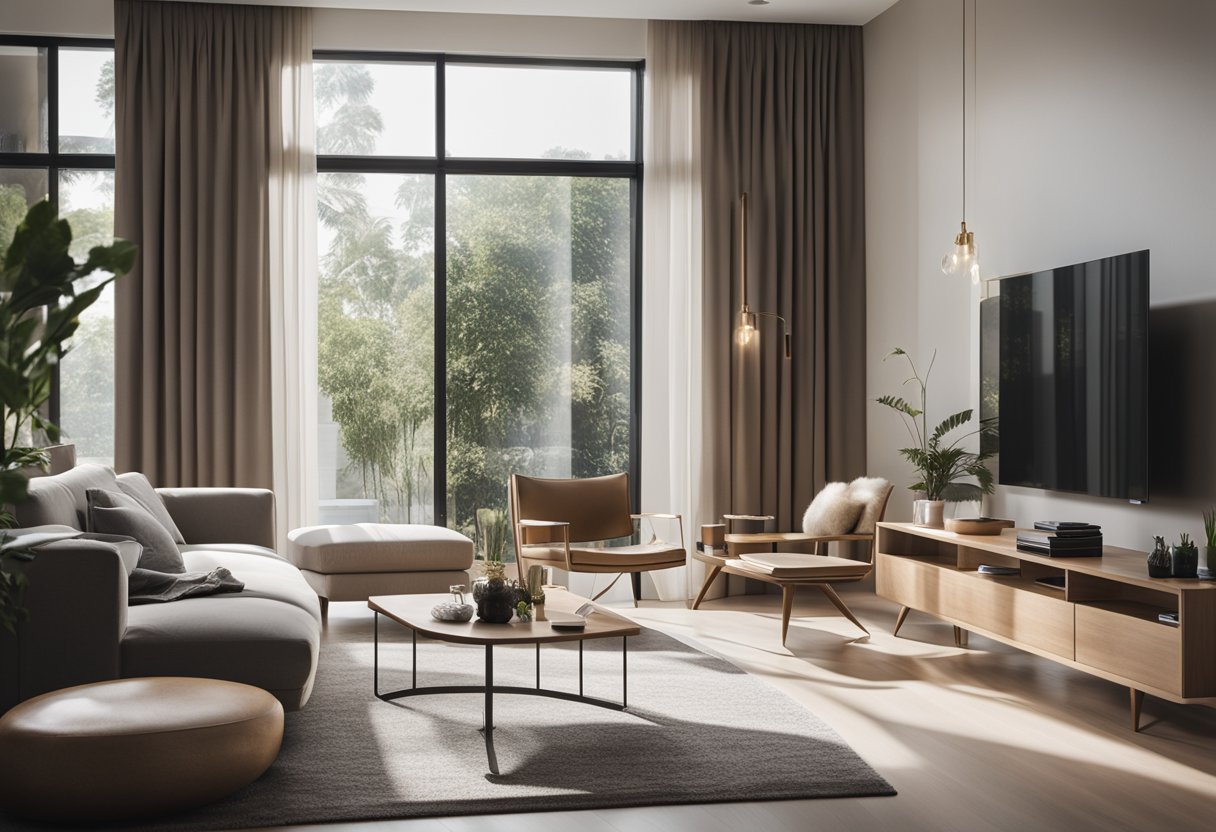
Creating the right ambience is crucial to contemporary interior design, and lighting plays a crucial role in achieving this. With the right lighting, you can create a warm and inviting atmosphere that makes you and your guests feel comfortable and relaxed. In this section, we will discuss the importance of strategic lighting design and natural light utilisation in contemporary interior design.
Strategic Lighting Design
Strategic lighting design is essential to create the right ambience in a contemporary interior. You can use a combination of different types of lighting, including ambient, task, and accent lighting, to create a layered effect that adds depth and dimension to your space.
Recessed lighting is a popular choice for contemporary interiors as it provides a sleek and modern look. You can use recessed lighting to highlight specific features in your room, such as art pieces or architectural details.
Lamps are another great way to add a touch of style and warmth to your space. You can choose from a wide range of lamp styles, including table lamps, floor lamps, and pendant lamps, to create the perfect lighting scheme for your interior.
Natural Light Utilisation
Natural light is an important element of contemporary interior design. It not only provides a natural source of light but also helps to create a feeling of openness and spaciousness in your space.
Window treatments are an important consideration when it comes to natural light utilisation. You can choose from a wide range of window treatments, including blinds, curtains, and shades, to control the amount of natural light that enters your space.
In conclusion, strategic lighting design and natural light utilisation are essential to create the right ambience in a contemporary interior. By using a combination of different types of lighting and window treatments, you can create a warm and inviting atmosphere that makes you and your guests feel comfortable and relaxed.
Architectural Elements
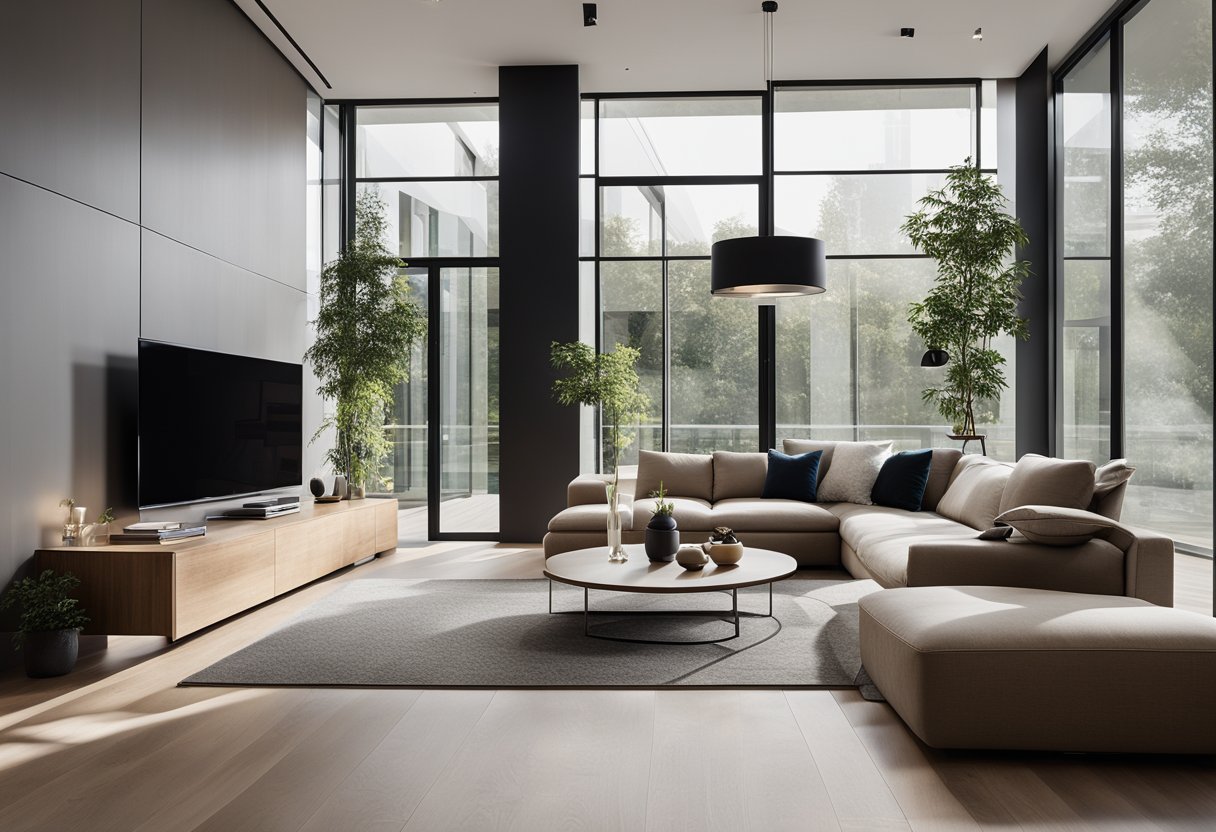
Contemporary interior design is all about combining functionality with aesthetics. It is a style that is characterized by clean lines, minimalism, and a focus on function over form. In this section, we will explore some of the key architectural elements that define contemporary interior design.
Open Spaces and Flow
One of the defining features of contemporary interior design is the use of open spaces and flow. This means that rooms are not separated by walls, but instead flow seamlessly into one another. This creates a feeling of spaciousness and allows natural light to flow throughout the space.
Geometric shapes are often used to define different areas within an open space. For example, a kitchen island or a dining table can be used to create a distinct area within a larger open space. Glass walls and doors can also be used to create a sense of openness while still providing some privacy.
Minimalism and Functionality
Minimalism is another key element of contemporary interior design. This means that there is a focus on simplicity and the use of only essential elements. This creates a clean and uncluttered look that is both calming and visually appealing.
Functionality is also a key consideration in contemporary interior design. This means that furniture and decor should be both stylish and practical. For example, a sofa might have built-in storage, or a coffee table might have a hidden compartment for storing magazines or remote controls.
Concrete floors are a popular choice in contemporary interior design as they are both durable and low-maintenance. They also add an industrial edge to the space. However, they can be softened with the use of rugs or other soft furnishings.
In summary, contemporary interior design is all about creating a space that is both functional and visually appealing. By using open spaces, geometric shapes, and minimalism, you can create a space that is both modern and timeless.
Contemporary Trends and Innovations
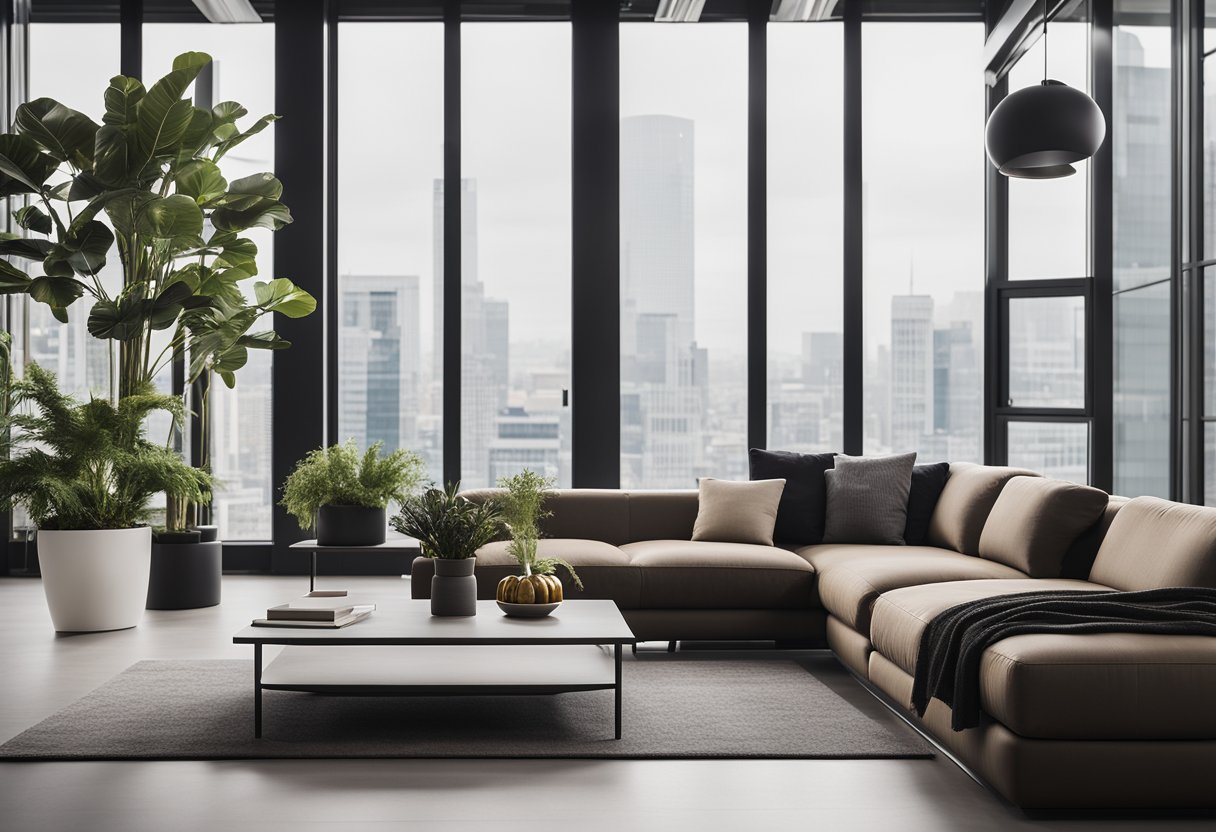
Contemporary interior design is a dynamic field that continually adapts to changing preferences and lifestyles. If you’re planning a home renovation or looking for inspiration to update your living space, here are some current design movements and innovations to consider.
Current Design Movements
Contemporary interior design is defined by clean lines, decorated minimalism, and current trends. Earth-inspired colour palettes, biophilic design, and the integration of nature into interior spaces are just some of the popular trends within contemporary design. Texture, simplicity, and sophistication are also key elements of this design style.
One of the most exciting trends in contemporary interior design is the use of technology. Smart homes are becoming increasingly popular, with homeowners looking for ways to make their living spaces more efficient, comfortable, and convenient. From automated lighting and temperature control to voice-activated assistants and home security systems, there are many ways to incorporate technology into your contemporary interior design.
Sustainable and Smart Homes
Sustainability is another important trend in contemporary interior design. With a growing awareness of environmental issues, many homeowners are looking for ways to reduce their carbon footprint and create more eco-friendly living spaces. From energy-efficient appliances and lighting to sustainable materials and green roofs, there are many ways to incorporate sustainability into your contemporary interior design.
Smart homes can also be sustainable homes. By using technology to monitor and control energy usage, you can reduce your environmental impact and save money on your energy bills. Smart thermostats, for example, can learn your habits and adjust the temperature accordingly, while smart lighting can be controlled remotely to reduce energy waste.
In summary, contemporary interior design is all about clean lines, decorated minimalism, and current trends. By incorporating technology, sustainability, and smart home innovations, you can create a living space that is both stylish and efficient.
Integrating Personal Style
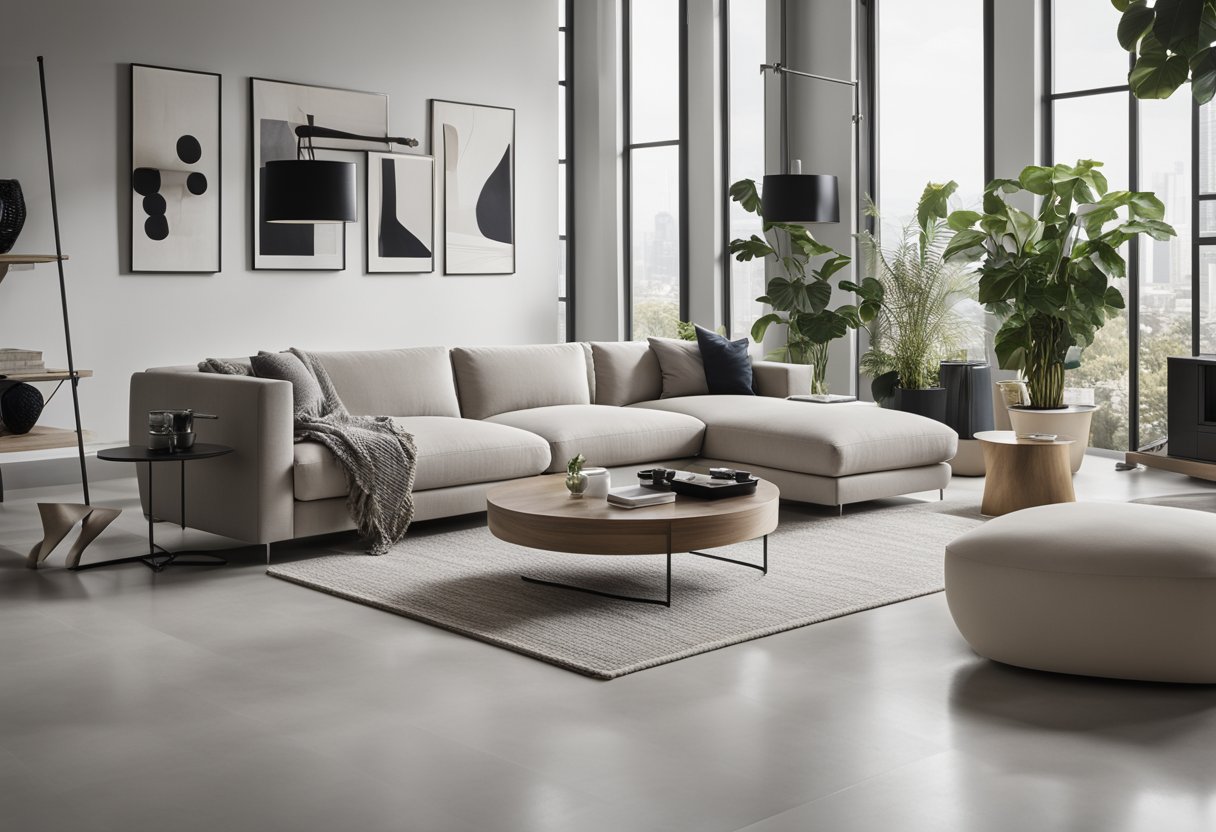
When it comes to contemporary interior design, it’s all about creating a unique space that reflects your personal style. Here are some tips to help you integrate your own style into your home:
Creating a Unique Space
One of the best ways to incorporate your personal style into your home is by adding unique pieces that reflect your personality. This could be anything from artwork to furniture to decorative objects. Look for items that speak to you and make you happy. Don’t be afraid to mix and match different styles to create a space that is truly your own.
Balancing Trends with Timelessness
While it’s important to stay up-to-date with the latest design trends, it’s equally important to create a space that is timeless. This means finding a balance between trendy pieces and classic, timeless pieces that will stand the test of time. When choosing furniture and decor, look for pieces that have a classic, timeless feel but also incorporate modern elements to keep the space feeling fresh and current.
Overall, integrating your personal style into your contemporary interior design is all about finding a balance between unique pieces and timeless elements. By following these tips, you can create a space that is uniquely yours and will stand the test of time.
Global Influence and Adaptation
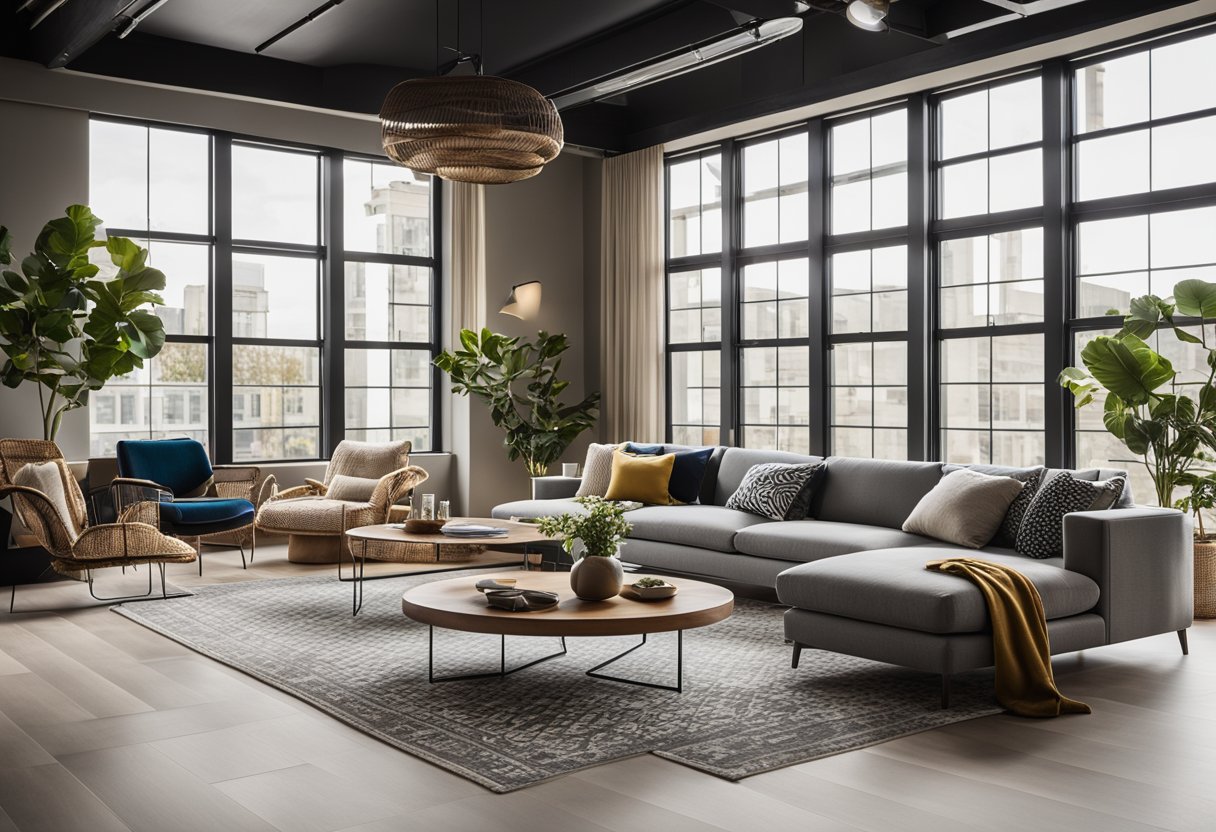
Contemporary interior design is a fusion of diverse cultural elements from all over the world. The global influence on interior design has resulted in the creation of unique and innovative design styles that are appreciated by people of all cultures. In this section, we will explore some of the ways in which global influence has impacted contemporary interior design.
Scandinavian Inspirations
Scandinavian style has had a significant influence on contemporary interior design. This design philosophy is characterised by a minimalist and functional approach, with a focus on creating a comfortable and inviting living space. Scandinavian design is renowned for its use of natural materials, such as wood, and its emphasis on light and space.
Incorporating Scandinavian design elements into your contemporary interior design can help create a warm and inviting atmosphere. You can achieve this by using natural materials such as wood, stone, and leather. You can also incorporate light-coloured fabrics and furniture to create a bright and airy feel.
Incorporating Diverse Cultural Elements
Contemporary interior design is all about incorporating diverse cultural elements from all over the world. You can achieve this by using a mix of colours, textures, and patterns. For example, you can use African-inspired prints on cushions, or Japanese-inspired wallpaper to create a unique and interesting design.
Incorporating diverse cultural elements into your interior design can help create a sense of global awareness and appreciation. You can also use furniture and decorative items from different cultures to create a unique and eclectic look. Be creative and mix and match different styles to create a truly unique and personalised living space.
Overall, the global influence on contemporary interior design has resulted in the creation of unique and innovative design styles that are appreciated by people of all cultures. By incorporating diverse cultural elements into your interior design, you can create a warm and inviting living space that reflects your global awareness and appreciation.
Professional Practice and Advice
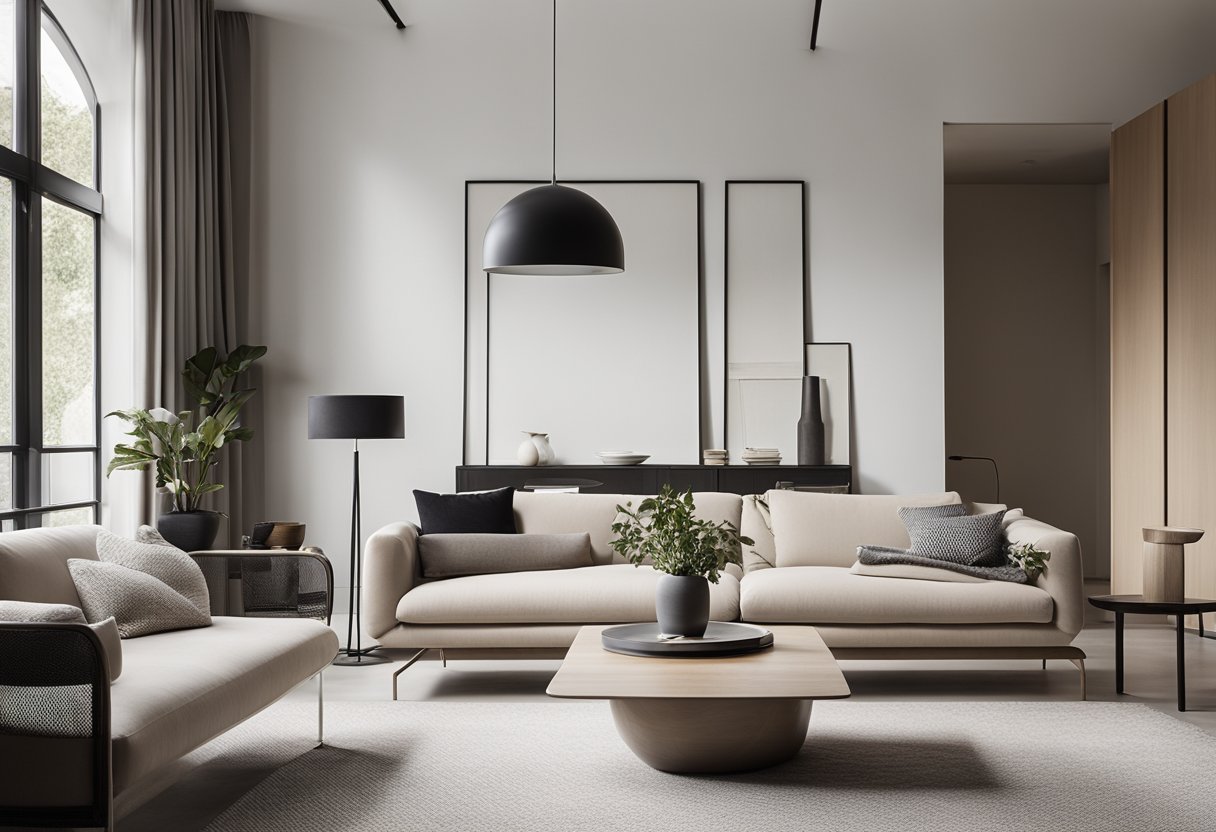
If you’re planning to renovate your home and want to achieve a contemporary interior design, working with an interior designer can be a great help. Interior designers are professionals who can provide you with expert advice on how to create a cohesive and stylish look for your home.
Working with Interior Designers
When working with an interior designer, it’s important to establish clear communication from the start. You should discuss your goals and preferences with your designer, as well as your budget and timeline. This will help ensure that you’re both on the same page and that your designer can create a design plan that meets your needs.
Your designer can also provide you with guidance on selecting materials, furniture, and accessories that will work well together to create a cohesive design. They can also provide you with advice on how to best use your space and make the most of your available square footage.
Planning and Executing Renovations
When planning your renovation, it’s important to take into account the layout and flow of your home. Your designer can help you create a floor plan that maximizes your space and makes it easy to move from one room to another.
When executing your renovation, it’s important to work with a team of professionals who can ensure that your design is executed to your specifications. This may include contractors, electricians, and plumbers, among others.
Throughout the renovation process, it’s important to stay in close communication with your designer and your team of professionals. This will help ensure that your project stays on track and that any issues that arise are addressed in a timely manner.
By working with an interior designer and following professional advice, you can achieve a contemporary interior design that is both stylish and functional. So, go ahead and start planning your renovation today!
Future of Interior Design
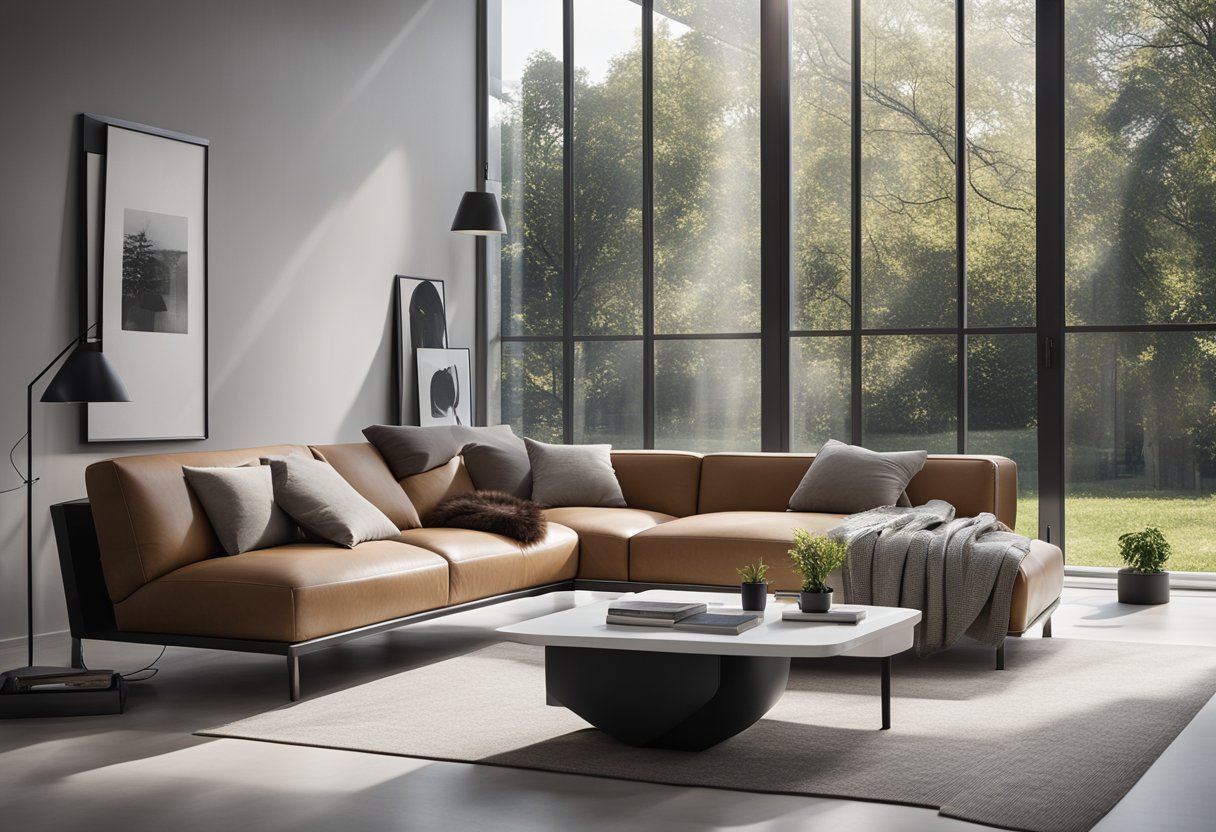
Interior design is a dynamic industry that is always evolving. As a design enthusiast, you must be excited to know what the future of interior design holds. Here are some emerging styles and materials and changes that you can anticipate in interior design:
Emerging Styles and Materials
The future of interior design is set to feature a blend of styles that represent what is currently in style. Contemporary design, for example, is a mix of styles that feature sleek and minimalist designs. The trend is set to continue, with designers incorporating new materials and textures to create unique and exciting designs.
One emerging style in interior design is the use of earthy and wooden interiors. This trend is set to replace the cold and detached greys of modern steel, concrete, and glass. The use of natural materials such as wood and stone is set to increase, creating a warm and inviting atmosphere in interior spaces.
Another emerging material in interior design is the use of smart materials. These are materials that can change their properties in response to environmental changes. For example, smart glass can change its opacity in response to the amount of light in a room. The use of smart materials is set to revolutionize the way we design interior spaces.
Anticipating Changes in Design
As technology continues to advance, we can expect to see new design trends emerge. The use of 3D printing technology, for example, is set to become more prevalent in interior design. This technology allows designers to create custom-made furniture and fittings, giving them greater creative control over the design process.
Another change that we can anticipate in interior design is the increased use of sustainable materials. As people become more aware of the impact of their actions on the environment, there is a growing demand for sustainable and eco-friendly materials. Designers are responding to this demand by incorporating sustainable materials into their designs.
In conclusion, the future of interior design is set to feature a blend of styles and materials that represent what is currently in style. The use of natural materials such as wood and stone is set to increase, creating a warm and inviting atmosphere in interior spaces. As technology continues to advance, we can expect to see new design trends emerge, such as the increased use of 3D printing technology and sustainable materials.
Conclusion
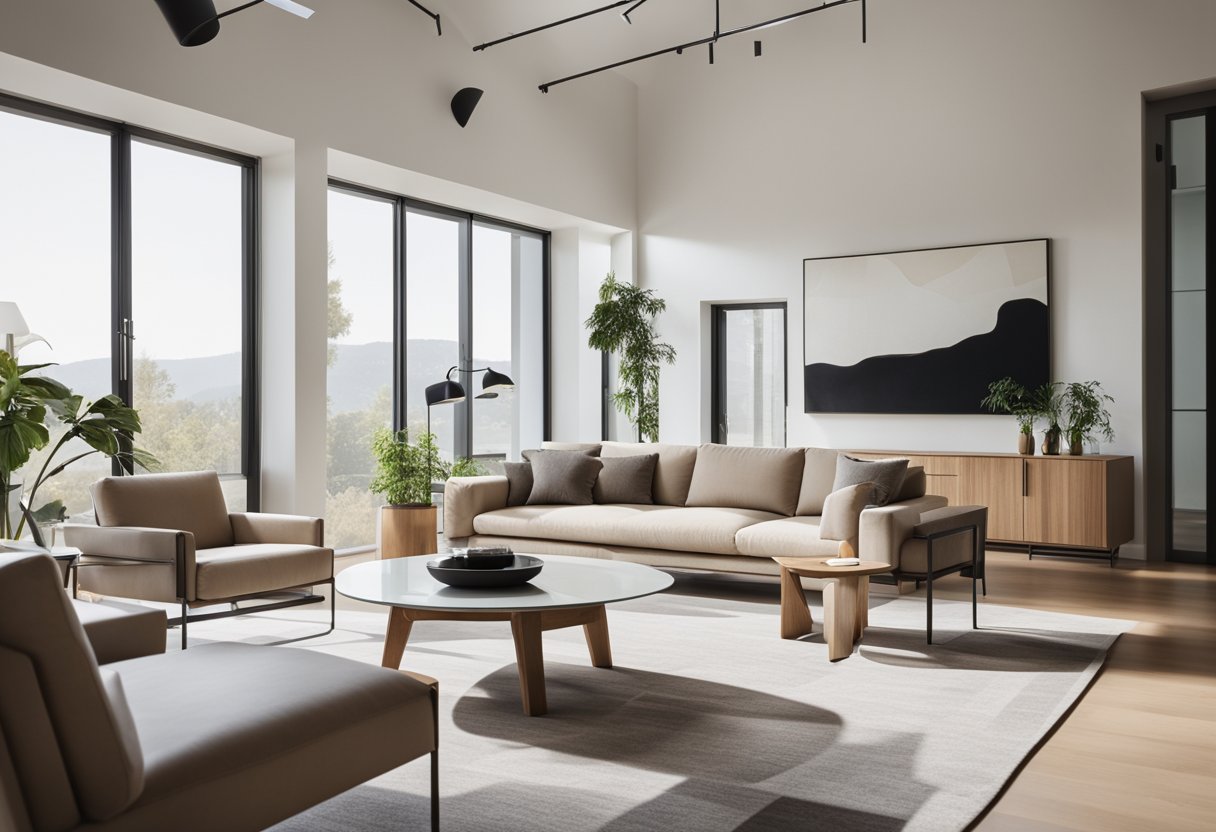
Congratulations! You now have a better understanding of contemporary interior design and how it can transform your living space. By embracing the key principles of contemporary design, you can create a visually stunning and functional home that reflects your personal style and preferences.
Remember, contemporary interior design is all about simplicity, clean lines, and a minimalist approach. This means that you should avoid clutter and focus on creating a sense of openness and flow within your living space. Use neutral colours, such as white, grey, and beige, to create a calming and relaxing environment.
When it comes to furniture, choose pieces that are sleek and modern, with clean lines and minimal ornamentation. Don’t be afraid to mix and match different styles and materials to create a unique and personalised look.
Finally, don’t forget to incorporate natural materials, such as wood, stone, and metal, into your design. These elements add warmth and texture to your living space, and help to create a sense of harmony and balance.
With these tips in mind, you’ll be well on your way to creating a contemporary interior design that is both stylish and functional. So go ahead, get creative, and have fun transforming your home into a modern sanctuary that you can be proud of!
Frequently Asked Questions
How can I incorporate contemporary themes into my home decor?
Incorporating contemporary themes into your home decor can be done in several ways. One way is to focus on clean lines and minimalism. This means removing clutter and simplifying your furniture and decor choices. Another way is to incorporate modern materials such as glass, metal, and concrete into your decor. You can also add pops of bright colours to give your space a more lively and energetic feel.
What are the defining characteristics of contemporary style furniture?
Contemporary style furniture is characterised by its clean lines, sleek and simple designs, and use of modern materials such as metal, glass, and concrete. The furniture is often minimalistic and functional, with an emphasis on comfort and practicality. The use of bright colours and bold patterns is also common in contemporary furniture design.
Could you suggest some contemporary interior design ideas for living rooms?
Sure! Some contemporary interior design ideas for living rooms include using neutral colours such as white, grey, and beige as a backdrop and adding pops of bright colours through furniture and decor choices. You can also incorporate modern materials such as glass and metal into your living room decor. Another idea is to use geometric patterns and shapes in your furniture and decor choices to give your space a modern and stylish look.
What are the key differences between classic and contemporary design approaches?
The key differences between classic and contemporary design approaches lie in their design philosophies and aesthetics. Classic design approaches are characterised by ornate, intricate designs, and a focus on traditional materials such as wood and leather. Contemporary design approaches, on the other hand, focus on clean lines, simplicity, and the use of modern materials such as metal, glass, and concrete. Contemporary design is also more focused on functionality and practicality than classic design.
Can you provide examples of how contemporary design philosophy influences home aesthetics?
Certainly! Some examples of how contemporary design philosophy influences home aesthetics include the use of clean lines and minimalism in furniture and decor choices, the incorporation of modern materials such as glass and metal, and the use of bright colours and bold patterns to add energy and excitement to a space. Contemporary design also places a strong emphasis on functionality and practicality, which is reflected in the design of furniture and decor choices.
What are some exciting contemporary interior design trends for bedrooms?
Some exciting contemporary interior design trends for bedrooms include using neutral colours such as white, grey, and beige as a backdrop and adding pops of bright colours through bedding and decor choices. Another trend is to incorporate natural materials such as wood and stone into your bedroom decor. You can also use geometric patterns and shapes in your bedding and decor choices to give your space a modern and stylish look.


